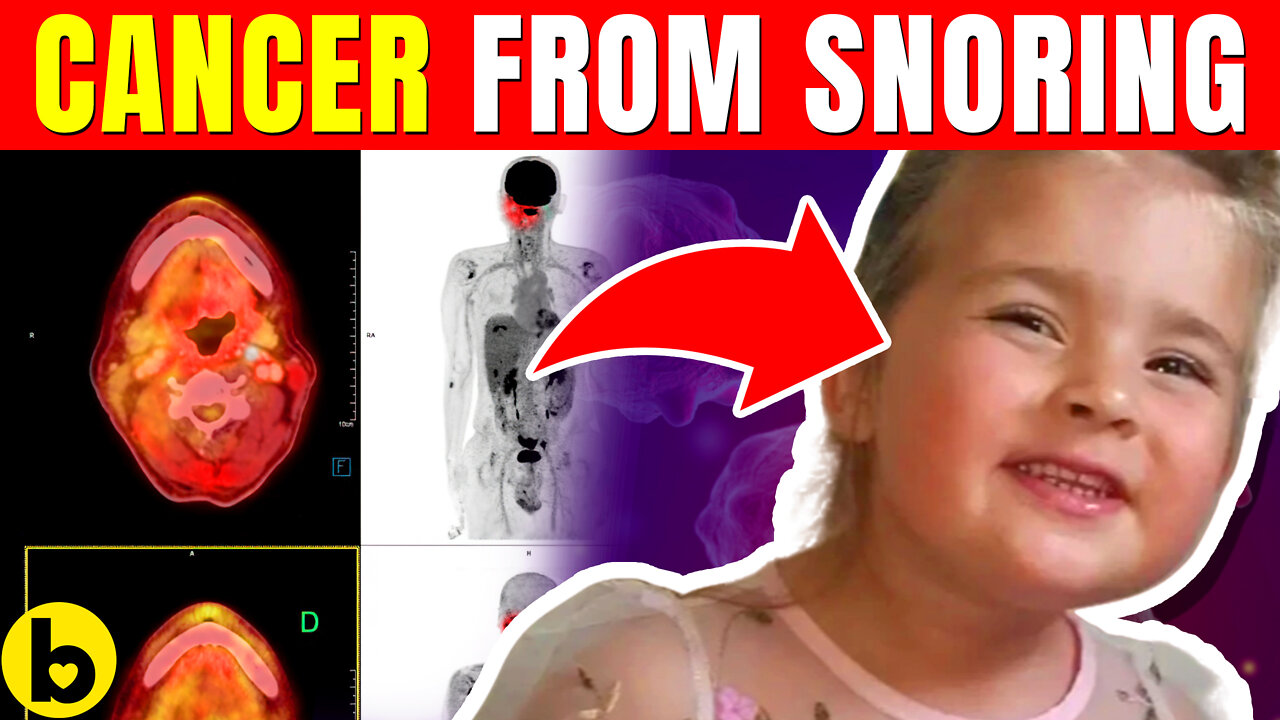Premium Only Content

Snoring In A 3-Year-Old Turned Into A Rare Cancer
Today we'll discuss a terrifying incident that gripped the Owen family.
In 2021 Isabella Owen, a little toddler from Hartlepool had just turned 3. She was happy, full of life, and cheerful like any other tiny tot. Everything was great in the Owen family. But in early August, Isabella had a bit of a cold. At least, that is what her parents, Rob and Amy Owen, thought.
Then a strange thing happened. Isabella started snoring and had terrible breath. Amy suspected her daughter had hay fever and took her to a doctor. But it was dismissed as nasal polyps. Isabella's mother's intuition kicked in when things started getting worse. What happened next was nothing less than a horror movie.
GoFundMe: https://www.gofundme.com/f/funds-to-give-isabellah-some-fun-memories-i-my
#Cancer #CancerDiagnosis #Bestie
Sources: https://pastebin.com/h5byEHAZ
Timestamps:
Intro - 0:00
Let's first talk about the severity of this cancer - 1:34
What causes this cancer? - 2:15
Music:
https://www.youtube.com/audiolibrary/music
https://www.epidemicsound.com/
Summary:
Let's first talk about the severity of this cancer.
The nasopharynx is the uppermost part of the throat. The throat muscles mingle with each other to form this hollow tube-like structure. It lies just behind your nose and just above the roof of the mouth. The nasopharynx is the most crucial part of your windpipe as it allows the passage of air from your nose to the lungs.
Nasopharyngeal cancer affects the cells of the nasal cavity and the throat. The nasal cells can divide uncontrollably and destroy adjacent tissues. It affects more teens than children. Nasopharyngeal cancer has a low incidence too. It impacts one in every 100,000 people every year.
What causes this cancer?
Being infected by the Epstein-Barr virus or having a strong family history of nasopharyngeal cancer increases the child's risk of getting it. This cancer generally starts as a mild headache, blocked or stuffy nose, and nose bleeds. Amy had observed these symptoms in Isabella. After this stage, cancer flares up, causing earaches, infections, difficulty speaking, and lumps in the nasal and oral passage.
Since the doctors had detected Isabella's cancer quite early, it had not aggressively spread to other parts. That means it was treatable. This piece of news was a massive relief for the family.
Nasopharyngeal cancer in children is notorious for spreading rapidly to the bones, lungs, and liver. The tumors that form after the cancer cells spread are called metastatic tumors. The other name is secondaries. Most commonly, these secondaries of nasopharyngeal cancer lie in the lungs. That does not cause a person to have lung cancer, per se. In that case, cancer gets labeled as metastatic nasopharyngeal cancer.
The doctors carried out tests to confirm the spread of cancer. A procedure called cancer staging. They first conduct a detailed neurological exam to check if the brain, spinal cord, muscle reflexes, and other sensory organs are normal and to rule out high risk.
Doctors may also do chest x-rays as the nasopharyngeal cells are near the chest or CT scans. They also inject a contrast dye to see internal organs more clearly on the scan. A PET scan allows better and brighter visualization of tissues.
For more information, please watch the video until the very end.
-
 9:38
9:38
Bestie
2 years ago7 Red Foods You Must Eat That Can Save Your Heart Health
6861 -
 LIVE
LIVE
BEK TV
22 hours agoTrent Loos in the Morning 6/13/2025
196 watching -
 LIVE
LIVE
Lofi Girl
2 years agolofi hip hop radio 📚 - beats to relax/study to
1,391 watching -
 2:09:32
2:09:32
Side Scrollers Podcast
21 hours agoThese People Are Insufferable Twats | Side Scrollers Live
45K9 -
 2:57:50
2:57:50
The Pascal Show
20 hours ago $2.26 earnedDIDDY TRIAL LIVE! Jane Doe 'Victim #2' Defense CROSS! Diddy Trial Day 22
17.8K -
 7:58:54
7:58:54
TheBeardedNerdd
9 hours ago🔴 LIVE- Tarkov Labs and what not
15.4K1 -
 13:28
13:28
Actual Justice Warrior
20 hours agoBaltimore Squatters STEAL Taxpayer Funded Housing
37.1K5 -
 LIVE
LIVE
DoldrumDan
8 hours ago $0.45 earnedRAREST WEAPON - CHALLENGE RUN - First Playthrough - Elden Ring ?! DAY 18
177 watching -
![[Finale] MindsEye l Day 2 (June 12th)](https://1a-1791.com/video/fww1/cf/s8/1/B/T/U/S/BTUSy.Tkob-small-Continuing-MindsEye-l-Day-2.jpg) 6:29:11
6:29:11
darkprometheus112
9 hours ago $0.44 earned[Finale] MindsEye l Day 2 (June 12th)
11.6K1 -
 LIVE
LIVE
B_DubzZ
3 hours ago🔴Live | Warzone
78 watching